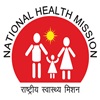Child Health

The child health programme under the National Health Mission (NHM) comprehensively integrates interventions that improve child survival and addresses factors contributing to infant and under-five mortality. It is now well recognized that child survival can not be addressed in isolation as it is intricately linked to the health of the mother, which is further determined by her health and development as an adolescent. Therefore, the concept of Continuum of Care, that emphasizes on care during critical life stages in order to improve child survival, is being followed under the national programme. Another dimension of this approach is to ensure that critical services are made available at home, through community outreach and through health facilities at various levels (primary, first referral units, tertiary health care facilities). The newborn and child health are now the two key pillars of the Reproductive, maternal, newborn, child and adolescent health (RMNCH+A) strategic approach, 2013.
As per Sample Registration System (SRS), Infant Mortality Rate (IMR) in Uttarakhand is steadily decreasing since 2016. Against the target of reducing IMR to 28 per 1000 live births by 2019 set by National Health Policy, 2017, Uttarakhand has been able to reduce the IMR to 27 per 1000 live births in 2021.
The strategies for child health intervention focus on improving skills of the health care workers, strengthening the health care infrastructure and involvement of the community through behaviour change communication.
Neonatal and Child Health
- Facility based sick newborn care
- To accelerate the reduction in neonatal mortality, Uttarakhand State is committed to improve the availability of quality newborn care services. One of the key steps in this direction is the setting up of newborn care facilities at various levels of public health services. Provision of newborn care facilities at various levels of health facilities increase the coverage of services at the time of greatest risk – birth and the first two days of life- and thus address the challenge of bringing down neonatal mortality in the state. It has following three components:
- Newborn Care Corner (NBCC)- NBCC is a space within the delivery room in any health facility where immediate care is provided to all newborns at birth.
- Newborn stabilization Care unit (NBSU)- NBSU is a facility within or in close proximity of the maternity ward where sick and low birth weight newborns can be cared for during short periods.
- Special Newborn Care Unit (SNCU)- SNCU is a neonatal unit in the vicinity of the labour room which will provide special care (all care except assisted ventilation and major surgery) for sick newborns.
- Home Based Newborn Care and Home Based Care for Young Child (HBYC) Programme
Nutrition
- Promotion of optimal Infant and Young Child Feeding Practices under Mother’s Absolute Affection (MAA) Programme with the celebration of Breastfeeding Week from 1-8 Aug every year and through MAA meetings with pregnant and lactating mothers and their families every quarter at village level.
- Micronutrient supplementation in the form of Vitamin A, Iron Folic Acid syrup for children aged 6-59 months to be consumed twice a week and once a week IFA Pink tablet for children aged 5-10 years at Anganwadi Centres and Schools. Anaemia is a serious global public health problem that particularly affects young children and pregnant women and Uttarakhand is not untouched by it.
- Management of children with severe acute malnutrition (SAM) at Nutrition Rehabilitation Centre (NRC), currently functional in 3 districts- Almora, Udham Singh Nagar and Haridwar. NRCs provide 14 days stay for the SAM children along with the parents, the child is treated for any infection and provided appropriate feeding, parents are provided Nutrition counselling and the child is discharged only after appropriate weight gain is achieved.
- National Deworming Day is celebrated twice each year where children aged 1-18 years are covered under the programme and given 1 dose of Albendazole.
Management of Common Child hood illnesses
- Intensified Diarrhoea Control Fortnight (IDCF)- Children aged 6-59 months are covered under the programme where in the month of July- Aug, ASHAs pre-place ORS packets and Zinc tablets at every household and educate mothers on its usage in case of a diarrhoeal episodes.
- Social Awareness and Actions to Neutralize Pneumonia Successfully (SAANS)- Pneumonia and Diarrhoea are the major causes of mortality in children less than 5 years of age. SAANS was launched in a phased manner in 2020, covering 4 districts each year. FY 22-23 will see the complete launch of the programme in the state including training of health workers in identification of early danger signs and awareness campaigns at community level to educate people on the identification and prompt management of the symptoms through health providers.

